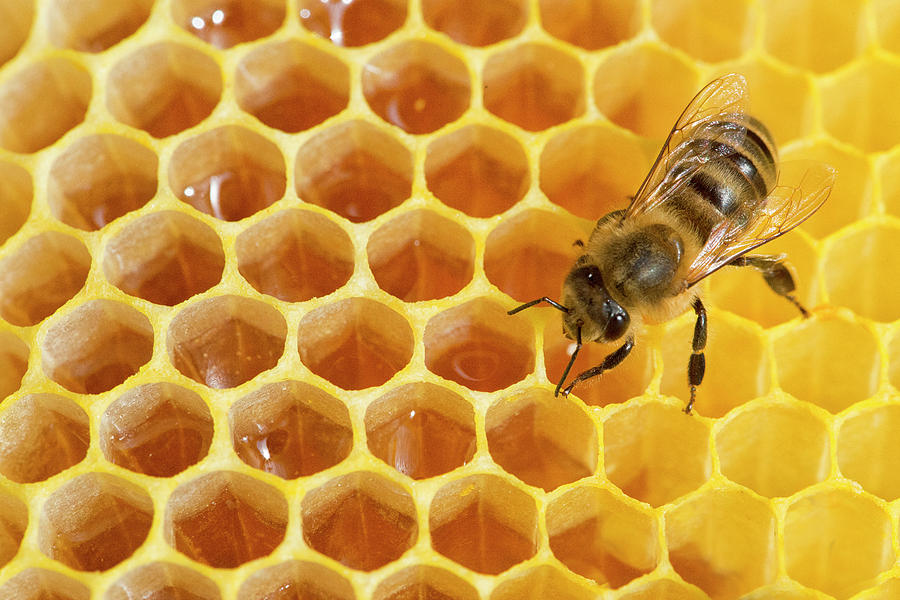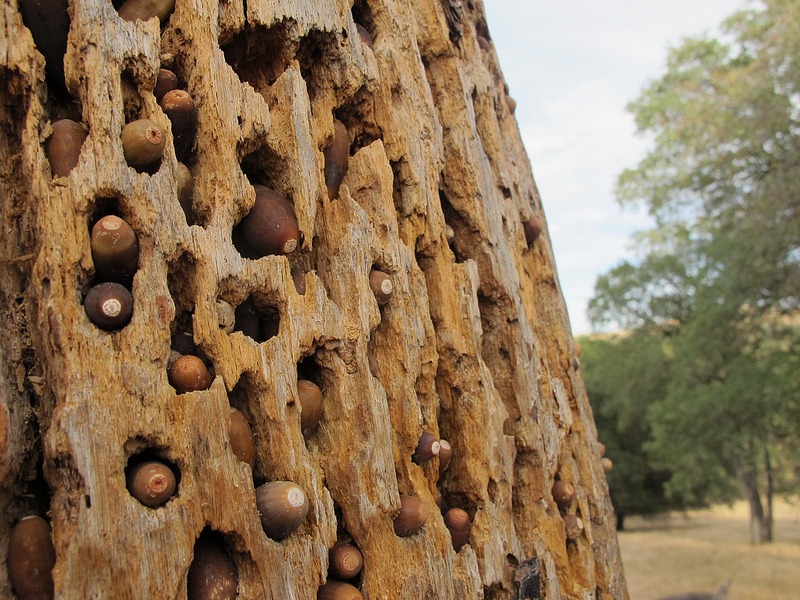Hoarding, also known as caching is the storing and hiding of uneaten food to be consumed later. As a behaviour hoarding is known to be exhibited by a large number of different types of animal although the details of how the hording is conducted can vary greatly depending on the species.

Many examples of hoarding are well known even to people who have little knowledge or interest in the natural world. Squirrels hiding nuts for the winter and dogs burying a favourite bone are perhaps the best known examples but many other mammals along with several species of bird and even some insects hoard in one form or another.

The length of time that the food is stored can vary from just a few hours to half a year or more. Animals who live in temperate regions and who neither migrate nor hibernate will often store food for the winter; again the squirrel is a well-known example. On the other hand when a Leopard makes a kill they will usually carry the body into a tree in order to eat it in safety away from jackals or hyenas. If the leopard cannot finish it’s kill at one meal, and let’s face it even a baby antelope is more than one meal, they will store it in the tree for several days, coming back to eat some whenever they are hungry. For bees however the amount of time that honey is stored depends on the needs of the hive with some of the honey being used immediately to feed larval bees while some will be stored to feed the hive during the winter.


Naturalists recognize two basic strategies used by the animals who hoard, scatter hoarding and larder hoarding. In scatter hoarding the animal will hide small amounts of food in a great many different places. The upside of this strategy is that if someone else, usually a member of the same species who’s been watching, finds one of your hiding places and pilfers it only a small amount of food has been lost. The downside is that the more hiding places you have, the more likely it is that robbers will find a few of them increasing the odds of some loss. Another disadvantage is that with so many hiding places an animal may end up forgetting about a few of them resulting in further loss. That animal’s loss can be the forest’s gain however as forgotten buried acorns or other seeds can sprout to become new trees, a process known as seed dispersal.

The opposite strategy is for the animal to keep its entire hoard of food in just a few, or even just one hiding place, a behavior known as larder hoarding. The benefits of larder hoarding are that the animal is unlikely to forget the location of any of its hoarded food and there are fewer hoards for a robber to accidentally discover. Of course if a robber does discover an animal’s larder it could mean the loss of everything, a real threat to any animal depending on its hoard to survive through a winter. Because of this threat those species that practice larder hoarding also spend a great deal more effort in guarding and defending their cache.

Naturalists have even observed a few species of animal that gather and hide food before it has ripened sufficiently to eat and then return later when the food has ripened. An example of this is the Central American Tayras, a relative of the weasel, who is known to hide green plantains for several days before retrieving and consuming them.

Hoarding is for the most part a selfish behavior with each animal keeping its own hiding places secret even from family members. In fact there are only two species, and very different species at that, who are known to share a communal larder, beavers and acorn woodpeckers. During the summer and fall beavers as a family will gather up a large stockpile of twigs and branches near their lodge that they then consume during the winter. Acorn woodpeckers are also different in that the community makes little attempt to hide their large larder at all.

Most species that hoard also pilfer from their neighbors and other species as well. Food items that are stolen are then often hidden by the thief, a process known as reciprocal pilfering. In an experiment Jeffery pine seeds that had been exposed to a mild dose of radioactivity to make them identifiable, where given to yellow pine chipmunks. When some of the seeds were then pilfered it was discovered that 75% of the time the robber cached the ill-gotten seeds. Obviously hoarding is a complex form of behaviour that requires an animal with a considerable degree of intelligence.

Any homeowner with a birdfeeder or a garden can testify as to what ingenious little devils squirrels are. But at the same time the advantages to be gained from hoarding have helped spur the evolution of intelligence in many animals. And not just animals, we humans are certainly hoarders, and I’m not just talking about the food in my refrigerator.
